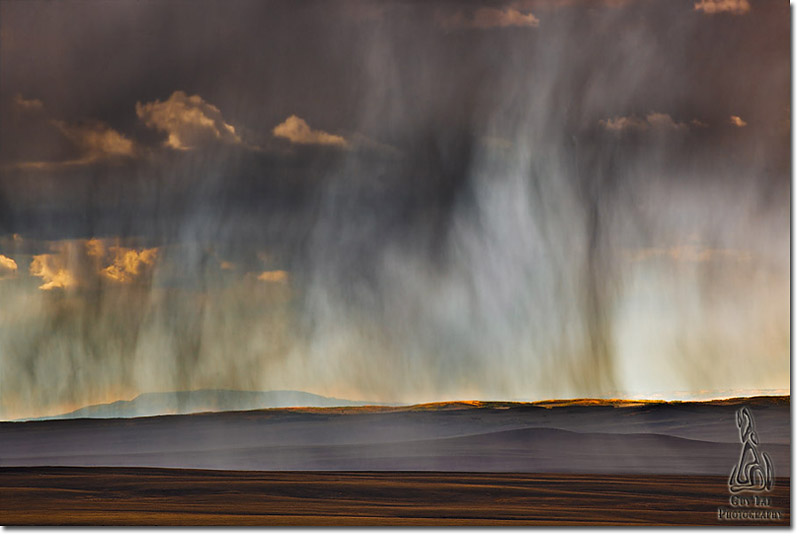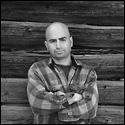The Essential Landscape: Don't Be An Idiot |
"Great photographers are a combination of wizard and idiot savant. They do what they do without truly understanding how, then make up a lot of convoluted theory to cover up their own ignorance of who and what they really are. Because of the self-doubt that nags photographers, photography's power as an art goes on being misperceived." - Owen Edwards
Almost since the first photographic image was made, artists choosing to work in the medium of photography faced an uphill battle for recognition of the legitimacy of their work and its acceptance as a fine art. Photography had been derided as being the product of machines and chemicals rather than the expressive minds of artists, and for offering no more than simple representations of reality, rather than having the freedom to convey nuanced and abstract concepts.
I will spare you the history lesson and evolution of the art through Pictorialism, Group f/64, etc. Just look up the terms for more evidence of the ongoing struggle. Perhaps the strongest articulation of the disconnect can be found in Gore Vidal's words: "For half a century photography has been the 'art form' of the untalented. Obviously some pictures are more satisfactory than others, but where is credit due? To the designer of the camera? To the finger on the button? To the law of averages?"
While such attitudes can be chalked up to misinformation or even elitism on the part of those who practice other forms of art, in reality it is an indication of a profound and, frankly, embarrassing ignorance of the expressive powers of composition, light, color, tone, and creativity, not to mention the effort, time, and skill required to produce an exceptional body of photographic work. To many, there is still no difference between the creation of deliberate and meaningful photographic work vs. making snapshots for the family album.

Perhaps saddest of all is that this profound ignorance is found not only in casual observers but also, and perhaps more so, in photographers! So many are quick to self-impose such lofty titles as "artist," or "fine-art photographer" without the slightest education in, or understanding of, art. The result of such ignorance is a staggering abundance of cookie-cutter images (same places, same compositions, same processing, etc.), which obscure any hope of identifying the photographer behind them, let alone understanding their intentions, sensibilities, style, motivation, and the emotions they wish to convey.
While the obsessive need to represent objective reality is a boon to some photographic applications (reportage, etc.) it is a complete non-sequitur when it comes to art. To the extent that art relates to reality, it does so in symbolic ways rather than literal ones. The reality of a sandstone wall in a canyon fifty miles from anywhere the viewer is ever likely to see in person is completely irrelevant to the artistic merit of a photographic work. The use of its lines, textures, patterns, colors, tones and reflective properties in creating a satisfying visual experience is where photographic art comes in.
At the root of any visual art is a deep understanding of the use of visual elements to evoke emotions and to appeal to elusive perceptions of aesthetics, curiosity, drama, fascination etc. Such an understanding is independent of medium and applies equally to painting, sculpture, cinema, performance, and photography; and yet, so few photographers take the time to fully explore and practice it, preferring instead to churn out bumper crops of repetitive renditions and yet-anothers.
When it comes to the artistic value of images and proclamations of self-importance, let me be very blunt: where there is no artist, there is no art. No matter how beautiful or powerful the feats of nature you photograph, if all you do is record them using photographic media without introducing your own sensibilities into the final product, what makes it art?
Your images should provide viewers with an experience they could not have had, and would never have seen or felt if it were not for your sharing it with them.

Also, by claiming (in one choice of words or another) that your role in your work is limited to transporting your gear and accomplishing a successful exposure, you are further thickening the shroud surrounding photography as a form of visual art and providing fodder for those who see it as a simple, easy, and technology-driven pursuit not truly worthy of the reverence reserved to, say, masterful paintings.
More perplexing are the diatribes on technique and "hero stories" so popular with the genre of nature photography. To be blunt yet again, nobody cares how far you hiked, how much your backpack weighed or the effects of giardiasis you suffered from drinking untreated swamp water. Seeing you hanging from a cliff and reading about the hurdles you encountered may get you a high-five from your friends but will do nothing to your credibility as an artist.
Great images should stand on their own and rely on emotion and mystery contained within the frame rather than tools, processes, or bravado. The mere knowledge of the mechanics behind them, not to mention a state of mind different from the emotion conveyed in the image, can be very detrimental to the image as a singular independent creation and experience.
"Photography would have been settled a fine art long ago if we had not, in more ways than one, gone so much into detail. We have always been too proud of the detail of our work and the ordinary detail of our processes." - Henry Peach Robinson
If you truly do intend on expressing yourself creatively and artistically through your photographic images, take a break from the incessant rush to produce large volumes of repetitive work, no matter how beautiful or impressive. Take the time to gain an understanding of Art: what it is, what it stands for and what it aims to achieve and contribute to the human experience. Invest in becoming an artist first, independent of tools. Learn to see and interpret and apply your own voice in your work.
If you want to see creative photography assume its rightful place in the pantheon of fine arts, don't be an idiot... not even an idiot savant.
Comments on NPN nature photography articles? Send them to the editor. NPN members may also log in and leave their comments below.
 Guy Tal is a professional photographer and author residing in the state of Utah, in the heart of a unique and scenic desert region known as the Colorado Plateau. Guy teaches and writes about the artistic and creative aspects of photography and guides private workshops and individuals seeking the beauty and solitude of the canyon country. More of his works and writings can be found on his web site and blog at guytal.com. You may also follow Guy on Facebook or Twitter.
Guy Tal is a professional photographer and author residing in the state of Utah, in the heart of a unique and scenic desert region known as the Colorado Plateau. Guy teaches and writes about the artistic and creative aspects of photography and guides private workshops and individuals seeking the beauty and solitude of the canyon country. More of his works and writings can be found on his web site and blog at guytal.com. You may also follow Guy on Facebook or Twitter.